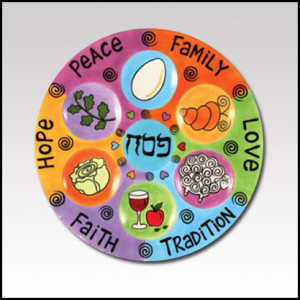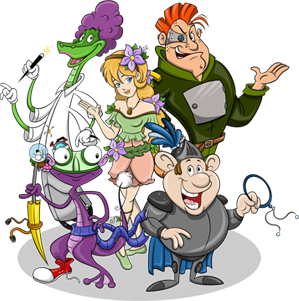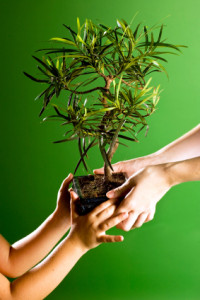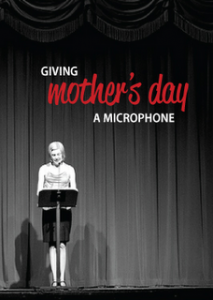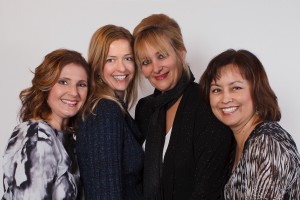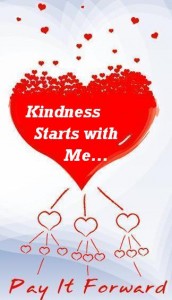Passover: “Let My Son Go!”
As the eight-day festival of Passover comes to an end, I’m feeling kind of melancholy. Maybe its the matzo. Actually, it’s the last Passover before my son embarks on his Exodus from home to college.
As I reflect over the years of his childhood, I can’t help but wonder if I made the most of building his Jewish identity. Did I do a good job planting seeds of his heritage so that he’ll want to continue to nourish his spiritual self as a young adult, maybe even attend a few functions at the Hillel on campus with his peers? Did I make enough of an impact that he wants to continue the lessons from his ancestors of thousands of years with his own children? After all, that’s what keeps Judaism alive.
To be honest, I would be fooling myself (it’s April Fools Day) if I thought that I indeed succeeded in my job to teach him as best I can about his religion by celebrating every holiday—from Sukkot to Yom Kippur—in its full splendor.
I could have done more.
Sure, we acted out the 10 plagues during the seder, including ping pong balls for hail, red food coloring for blood, sunglasses for blindness, and we asked the four questions in English and Hebrew. But now it seems like everyone at the table wants to rush through the story, and the Haggadah is read halfway through.
I could have done more.
Sure, we lit the candles on Hanukkah, fried potato pancakes, and played dreidel, but it was the overabundance of presents that he probably remembers the most. We also celebrated with a stocking on Christmas morning—gasp!
I could have done more.
One year he helped us build a sukkah in the backyard, hammering the  lattice wall into the wood beams. We hung fruit and waved the lulav, but not every year. Baseball and soccer tournaments got in the way.
I could have done more.
On Shabbat, especially when he was younger, I made dinner, we said the blessings, and ate challah, but most Friday nights we didn’t because we had other plans or I was too tired to cook at the end of the week.
I could have done more.
And even though I would have liked him to experience Jewish summer camp and youth group, it wasn’t his thing, although he enjoyed playing baseball in Maccabi with other Jewish athletes from around the country.
I could have done more.
On the high holidays, he stayed home from school and got dressed in his button down shirt, pants, and uncomfortable loafers, so that we could attend services together as a family. Then high school came around, and it got harder to miss important assignments and tests.
I could have done more.
I missed the times we used to go to a neighborhood lake and throw breadcrumbs in the water on Rosh Hashanah to practice the ritual of tashlich. We set goals for the New Year, but didn’t get to cross them all off our list.
I could have done more.
He went to Jewish preschool, met Jewish friends, attended Sunday school, learned Hebrew, mastered his Torah portion, became a bar mitzvah, and even got confirmed. He loved chanting the Hebrew prayers and was so proud of himself. But like any language, if you don’t use it, eventually you lose it.
I could have done more.
At least he wants to go to Israel one day and experience what his homeland is all about. Maybe he will connect with his culture and make new Jewish friends. Maybe he will learn to like falafel. Maybe not.
Even though I could have done more, I couldn’t be more proud of my son and the young man he is today. As he wraps up his senior year, he is so ready to leave home and tackle his new life in college.
Of course, I could have done more when it comes to his Jewish upbringing. But maybe I did enough.
He knows he always has a place to call home. He knows his family loves him.
And I promised him that next year if he comes home for Spring break, I will make him his favorite dishes. Charoset and chocolate matzo. Talk about Jewish guilt…
Your Passover Journey Begins Here
An accomplished singer/songwriter, educator and community organizer, Peri Smilow promises to take women of all ages and denominations on a spiritual journey they will never forget. Her music and message of tikkun olam has been heard worldwide; on March 12, she will perform at Nishmah’s annual pre-Passover extravaganza. It features music, food, learning and even shopping for Judaica items crafted by local designers.
Along with recently completing a national tour of her new cabaret act “Peri Smilow Sings the Great (Jewish) American Songbook,†this New Jersey-bred mom is a cantor, Harvard University graduate, social activist and an educational consultant. At the Nishmah event—which is a fun girl’s night out for moms and their daughters—Smilow will use her passion for Judaism, particularly the Passover holiday, to inspire women to immerse themselves in their Jewish identity and learn how to create a memorable seder that casts them in a central role.  She recently took time out to answer a few questions before her stop here.
How would you describe your music?
It is contemporary Jewish. There are only a handful, maybe 50 or a 100, people in the world writing this kind of music. We use important intellectual and spiritual themes of Jewish people, often singing in Hebrew and English, and set it to music of our contemporary times. I call it “Nusach America,†which is the sounds of the traditional chanting of our people and America because the new melodies are reflective of the sounds of popular music in this country.
How do you incorporate social justice into your music?
I use Jewish teachings to deepen our understanding of our obligation to social justice. I want people to feel good about their Jewish roots, think more deeply and learn how they can be more impactful in the world.
This year’s social action project at the Nishmah event is about microlending, or giving small loans to poor people to alleviate poverty. Why is this important for Jewish women to be involved in?
This microlending project engages the St. Louis community about their role in helping Jewish women around the world. There is something about the dynamic of being expected to pay the money back that lifts people out of poverty. Each woman who receives a loan chooses where the money goes, which puts the control in her hands, and this is a very important tool for taking people out of poverty. Also, microlending is doable, manageable, and lots of people can afford to give $25. (That’s) a lot of money for a woman in Cambodia and can mean the difference between eating and not eating.
How do you inspire girls and women to take an active role in the Passover seder?
At the Nishmah event, I lead a program that is built around the framework of an actual seder. We will sit at round tables and talk with one another like at a family seder. We will share important dialogue about the role of women in Jewish life. We will get a chance to exchange ideas and recipes, but we will also go much deeper than that. The goal is for women to not have to be in the kitchen preparing, but to be seated at the table enjoying the seder.
Why is it important for Jewish women of all backgrounds to learn from each other?
This Nishmah event is different from any other seder because it is the most inclusive women’s seder in America. We have Reform, Conservative, Orthodox and Chabad women celebrating together, and that does not happen in this country. Over the last several months, a great deal of work has gone into planning this program, allowing women from various denominations to highlight their experiences from their own Passover seders. I’m so excited to have Hasidic women join us; it’s like a cross-cultural experience even though we’re all Jewish. It’s called “Klal Yisrael,†which means we’ll have women in the room that night who represent every corner of the fabric of our people, all of Israel.
Describe how Nishmah’s pre-Passover experience relates to the story of Exodus.
We are basically Jews celebrating Passover in the framework of a seder, and we are reenacting the ancient journey through the dessert from slavery to freedom. If I do my job as the ringleader, the emcee, the train conductor, the journey leader, the women will feel like they have been on an extraordinary journey. We sing, we eat, we dance, we create, we talk, we explore, we question. We will do all those things at the JCC.
Why is it important to have programs like this for girls and women?
First of all, I’m a girl. Second of all, I’m a mom. And third of all, I’m a daughter. I connect with women and girls, naturally.  The thing about Passover is that in most generations, even post-ERA, women spend most of Passover preparing, getting food ready and taking care of kids. This event allows us to have our (behinds) in the seats and relaxing. In the Haggadah, we are supposed to be leaning on a pillow. This Passover seder allows women to sit and relax and think and reflect, which is critically important because all that reflection comes back into their homes and families. This event shows women how to be full contributors to their seders in a way that often we are not.
Does your family share your love for music?
Yes! I married into a musical dynasty. My husband is a NY1-TV Senior Correspondent and a former Kutz Camp song leader for NFTY (National Federation of Temple Youth). His brother Doug Mishkin is a lawyer and a well-known singer/songwriter of music in the Reform movement. My daughter also sings, and plays piano and violin. But she is a typical 9-year-old and doesn’t like when mom sings. She prefers to listen to Taylor Swift.
Your most recent release, “Blessings,†which was co-produced by Grammy-Award winner Ben Wisch, draws on your experience as a two-time cancer survivor, wife and mother. How has cancer changed your life?
I think that having experienced cancer has deepened my desire and drive to make a difference in this life. Cancer is a reminder that we have no promise about how long we have to be here. I really want to make every single day count and one way I’m doing it is by participating in Nishma’s pre-Passover event. I’m so looking forward to celebrating with the women in St. Louis.
“Me In A Tree” Brings Families Together Through Technology
The secret to a happy family is strong communication, and if you wait until your kids are teenagers to make that connection, then, I’m sorry to say you have your work cut out for you. Maybe you’ll have better luck with your grandchildren. Kidding! Actually, luck has nothing to do with making lifelong bonds with your children. It takes a lot of work to create a happy family, just like a marriage, and the sooner you start the better.
One of the newest ways to build a strong family foundation is through technology. (Even toddlers are potty-trained while using their IPads these days). The fact is, we spend so much time on our computers, we might as well make it worthwhile, quality time together.
That’s the idea behind  “Me In A Tree,†an interactive, family friendly, online program designed to help busy families connect. The tree, for me, is symbolic because a tree has roots like a family. In the Jewish teachings, parents are responsible for planting the seed and growing the tree for the next generation.
So this computer program is easy to use and features lots of colorful, animated characters, apps, tools, and plenty of resources to make parenting easier, even though it’s the hardest job in the world. Families are encouraged to have regular “family huddles†or meeting times, even 30 minutes a week can make a difference.
A family that plays together, stays together, and “Me In A Tree†includes a variety of ways to get started, such as organize a calendar, plan fun activities, find places to volunteer in your community, create a motto, assign individual chores, keep a grateful journal, and even write your own blog. All of these strategies encourage important character traits, such as communication, organization, support, responsibility, gratitude, and family union.
So check out the website and take a family assessment to find out what your strengths and weaknesses are, and start climbing the tree together! A video tutorial is provided, so it’s a no brainer. In fact, your kids will navigate their way through the maze much quicker than you!
And as your family grows, you can change your goals and ideas.  Stay up to date on the latest developments and meet other fans on Twitter and Facebook.
Subscribe today for a 2 week free trial, and let me know how your family likes Me In A Tree!
My Journey To Israel
How do we change in the world?
The question itself makes my head spin. I mean, it’s overwhelming, seemingly impossible to change the world. Right? I can hardly make my kids change their own bedsheets.
And yet I know we have to create change. The greatest threat to the Jewish people is not racism or discrimination or wars against Israel. Our biggest enemy is apathy and ignorance.
Something has to change. In the words of Rabbi Hillel:
“If I am not for myself, then who will be for me?
And if I am only for myself, then what am I?
And if not now, when?”
So, how do I change the world?
One community at a time.
How do I change the community?
One home at a time.
How do I change the home?
One mom at a time.
Sounds like a simple enough answer to a complicated question, changing the world. And yet this is precisely the game plan of the Jewish Women’s Renaissance Project (JWRP), which was established in 2008 with the purpose to empower Jewish women to change the world.
How do they do this?
Through their flagship program, T.A.G. (Transform and Grow) Missions to Israel, JWRP offers thousands of women from around the world a special gift: a highly subsidized nine-day action-packed trip to Israel. To date JWRP has brought close to 2,000 women from 40 cities and seven different countries to their homeland. In 2012, they brought 1,000 more from around the world. This year, they will change the lives of many more women. And, I’m thrilled to say, I’m one of them.
This summer, I’ll embark on a journey with about a dozen St. Louis moms who share the same vision, and that is to experience self-growth and personal development so that we can reach our potential as Jewish women, wives and mothers. As we walk the crowded streets of Jerusalem, pray at the Western Wall, hike the Masada, float in the Dead Sea, eat the best falafel, bargain for souvenirs in Tel Aviv, learn how to make challah, ride a camel, and watch the sun melt into the Mediterranean, we will transform ourselves and reawaken our passion and commitment that has been the legacy of the Jewish people for the last 4,000 years. The goal is that when we return home, our “other” home, we’ll share our stories and enthusiasm to inspire our communities, our families, and our children to love being Jewish, too.
This is how we change the world. One mom at a time.
I plan to document my experiences here in my blog as I prepare myself emotionally and physically for this adventure, and that includes investing in a good pair of walking shoes and figuring out how to endure the longest plane ride in my life—at least 13 hours—without going bonkers.
Please feel free to share any advice you have on making the most of my first trip to Israel.
For now, I better practice my Hebrew. Shalom!
Â
Survival Tips for WAHMs (Work-at-Home Moms)
Even though St. Louis got slammed with snow and ice the other day, I was determined to make my TV appearance on the STLMoms show on KTVI Fox2 News. The show must go on, right? Every time I go to a TV studio, I’m amazed at the fast-paced routine that goes on behind-the-scenes, including the robotic cameras that roll across the floor, the producers who scramble at the last minute to set up props, the anchors who review their notes seconds before they go on air. As for me, I never know which camera to look into, and my mouth is so dry I can barely swallow, but it’s always a fun experience.
This time the lovely Margie Ellisor interviewed me to promote my seminar at the Working Women’s Survival Show, and the topic was “Survival Tips for WAHMs.” (Not sure why this clip has video of the newsroom and men working on their computers, but oh well, that’s show biz).
Basically, I was trying to squeeze in this much info in a 3-minute segment.
As you know, moms are still trying to have it all. We want to be home with the kids and not miss out on their childhood moments, and we want our careers or we need to be a dual income family.
The reality is we can’t have it all—all the time. For many moms, the best way to balance work and family is to work from home. We are called “WAHMs†(not to be confused with the George Michael music group in the 80s). WAHM stands for Work-At-Home-Moms, and for us, it’s “business un-usual.â€
In fact, according to the Center for Women’s Business Research, there are 10.1 million women-owned businesses in the United States, and a growing number of them are run by SAHMs (stay-at-home moms).
Unlike many baby boomer moms who worked outside the home, millennial moms want more time at home with their children. It’s not like we’re trading our laptop for an ironing board, but we’re finding creative ways to balance work and family.
TOP WORK-AT-HOME JOBS:
There are many exciting opportunities out there, take a quick look on the Internet.
- Virtual Assistants—complete administrative tasks from their home office, including data entry, typing reports, and scheduling appointments.
- Medical and general transcribers—listen to audio files recorded by medical professionals, law enforcement officials and professors. They use transcription equipment and software to produce a written report of the recordings.
- Virtual customer service agent– assist customers with technical issues, order processing, billing questions and scheduling service appointments.
- Freelance writer—write and create articles that are featured on blogs and websites and by online publishers. Experienced editors also needed to review articles and proofread.
- Telemarketers–call prospective customers and sell services or products. They are provided a script and a list of customers to contact.
- eBay buyer/seller—good for entrepreneurs at heart.
- Online Tutor—meet with students in an online classroom and work with them one-on-one to answer their questions in your subject area. No lesson plans, records to keep or tests to grade.
As a freelance writer, author and mom of 2 teenagers, I feel like I have the best of both worlds. If you work from home, keep in mind:
- be self motivated (don’t let facebook, Twitter, pinterest and social media distract you, unless, of course, its work related).
- be a multi-tasker (and by that I mean know how to change a diaper and conduct a conference call at the same time, or trim fat off raw chicken while you negotiate a contract)
- be willing to work odd hours (my creative juices stir at 3 a.m.)
- and have a sense of humor because your workday is unpredictable or what I like to say, “business un-usualâ€. (For instance, when my son was a toddler I remember locking myself in the bathroom to conduct a really important interview for a national magazine, and I improved the toilet seat lid as my desk. In hindsight, I should have locked him in the bathroom, right).
Here’s a few more survival tips:
- Have a schedule. Depending on your job, it helps to have a routine, whether that means answer emails before kids get up for school, stop workday at 3:30 p.m. to pick up kids or start dinner. Best part is flexibility, which comes in handy if kids are sick or have an appointment.
- Get dressed. Some moms like to wear clothes like they are going into the office, it helps put them in a professional mindset. For me, everyday is casual day, unless I have a meeting outside the home. I would much rather wear pajamas and fuzzy slippers than panty hose and pumps.
- Designate a comfortable and convenient workspace in your house, whether it’s the spare bedroom, walk-in closet, or corner of the basement. Seriously, does anyone ever use the living room except to set up a Little Tykes playset when the kids are toddlers? This empty area makes a great office!
- Keep all your essential office supplies handy in your desk drawer, including sticky note
pads, paper clips, chewing gum, and an emery board so you can file your nails if you have writer’s block or want to procrastinate.
- Don’t let your kids mess with your computer. Their games and videos can give you a virus that’s worse than influenza.
- Try to exercise during your workday. Burn calories by sprinting to the mailbox to see if you got any paychecks yet, and repeatedly run up and down the staircase for another scoop of chocolate peanut butter gelato.
- Get fresh air to break up your day. If the weather is nice, walk your dog, who has been a warm, fuzzy ottoman at your feet. If you don’t
have a dog, offer to walk your neighbor’s dog and you’ll never feel guilty about borrowing a box of MINUTE Rice again.
- Don’t sit too long in a desk chair, unless you’re doing regular kegel exercises and leg lifts with weights
strapped to your ankles.
- Keep up with the housework. Every time you pass something that looks dusty, wipe the furniture with
the sleeve of your sweatshirt.
- When the phone rings, don’t answer it, unless it’s a business call, your mother, or the school nurse. If you’re in deep
thought or on a roll, the last thing you need are interruptions from solicitors or your husband wanting to know what’s for dinner tonight.
- Take advantage of your children’s computer skills. Bribe them to set up your powerpoints.
- Finally, eat chocolate. It boosts your energy, immune system, and it tastes good.
Celebrate TuB’Shvat: Go Green
As indicated in President Obama’s recent inauguration speech, climate change is a top priority in our country’s agenda.
“We will respond to the threat of climate change, knowing that the failure to do so would betray our children and future generations,” he said.
“That’s how we will maintain our economic vitality and our national treasure — our forests and waterways, our croplands and snow-capped peaks. That is how we will preserve our planet, commanded to our care by God. That’s what will lend meaning to the creed our fathers once declared.”
The timing couldn’t be better for the upcoming holiday Tu B’Shvat, which occurs on “Day 15 of the Hebrew month of Shvat†or January 26 this year. Also known as “birthday of the trees,†Tu B’Shvat has roots in ancient Judaism, but has everything to do with today’s natural environment.
With greater attention to the dangers of global warming, Tu b’Shevat serves as a tangible way for families to be more aware of how they can make the world a healthier place to live, one tree at a time.
The Torah is called a “tree of life†(Proverbs 3:18), showing how trees connect to the highest Jewish values. Trees take a long time to grow and bear fruit, so our actions today will impact future generations.
Whether you donate money to plant a tree in Israel, organize a recycling drive at your school, carpool with neighbors to reduce pollution, or participate in a seder that features the “7 species†of fruits and grains, Jews are planting the seeds for tomorrow’s healthy, sustainable environment.
Easy ways to GO GREEN and save trees and rain forests include:
- buy products in bulk and use less packaging
- pay bills electronically instead of using paper
- reuse a cloth bag instead of paper or plastic
- plant a tree in your yard or local park
- start a community garden
- use natural instead of artificial lights
- ride your bike instead of driving a car
- fill up a reusable bottle with tap water
- unplug your computer and electronic stuff when not using it
- buy vintage clothing and reduce manufacturing costs to the environment
- eat less meat and more veggies
- turn off dripping faucet
- raise money for your favorite environmental cause
- encourage your family and friends to Go Green
So as you sample the delicious array of pomegranates, dates, figs, almonds, and other symbolic foods at your upcoming TuB’Shvat seder, make a commitment to be a steward of Mother Earth and carry on a Jewish tradition. Just try not to get too tipsy drinking all that wine.
Mom-In Chief Steals The Show, Again.
“My fellow Americans, we are made for this moment, and we will seize it –
so long as we seize it together,†Barack Obama.
As I struggle to help my daughter Sari understand the U.S. Constitution for her 8th grade homework assignment, at least the words “We the People†makes better sense to me now, thanks to yesterday’s inauguration of Barack Obama as our 44th president. Indeed, it was a great day to be American as our first African American president was sworn in for his second term. I wrote about his inauguration four years ago, and this time around was just as special.
It coincided with Martin Luther King, Jr. Day, the 150th anniversary of the Emancipation Proclamation to free slaves, the sesquicentennial year of the placement of the Statue of Freedom atop the new Capitol Dome in 1863, and a day off of school. If that isn’t reason enough for our kids to watch television all day long and witness a history lesson, I don’t know what is.  Obama placed his hand on the personal bibles of the Rev. King and his predecessor Abraham Lincoln when he  take the oath of office. The significance of it all was palatable.
The only thing that pulled me away from the TV momentarily was to sort cantaloupes and carrots at the Jewish Food Pantry with Sari and to take my son to a dermatologist appointment. Other than that, I was glued to the pomp and circumstances of the 57th presidential inauguration and tweeted about my favorite moments, including the memorable performances of Beyonce, Kelly Clarkson and James Taylor, who all made me weep at their renditions of American classics, and later that night I applauded Alicia Keys and Stevie Wonder, who brought down the house and made me wish that I didn’t have to wait another four years for a presidential bash.
Kindness Is Contagious. Are You In?
“It is not your responsibility to finish the work but neither are you free to desist from it either.”
Pirke Avot: Sayings of our Fathers 2:16
After the tragic December 14 shooting at Sandy Hook that resulted in the killing of 20 first-graders and six school administrators, people from all over the world wanted to do their part to help the families of the victims heal. We also wanted to relinquish our own pain. We wasted no time in inundating the small affluent town in Connecticut with millions of teddy bears and toys, not to mention donating millions of dollars to United Way funds.
Then we opened our hearts to our own communities when NBC News’ Ann Curry—the modern-day Maimonides—tweeted the idea about “#26 acts of kindness.†Again, we didn’t hesitate to tweet back “I’m in!† We stuck post-it notes everywhere with the message to “Pay it forward!†and encouraged each other in social media to join the feel-good bandwagon by sharing our ideas on the  26 Acts of Kindness Facebook page, which already has more than 95,000 “likes.â€
Indeed, the theme of the holiday season was “random acts of kindness,†which included everything big and small, like buy a cup of coffee for a stranger in line at Starbucks, tape a dollar bill on a vending machine, donate frequent flyer miles to Make-a-Wish, raise money for Connecticut’s first responders, give away gift cards to people buying meds at Walgreens pharmacy, feed the meter on a car parked in the street, pay off someone’s layaway account at Walmart, cover the toll for a dozen cars in line on the highway, and non-monetary deeds like deliver a meal to a homeless shelter, spend time with elderly relatives, volunteer at our kid’s school, pick up trash in a local park, make blankets for children at Ronald McDonald House, and bring freshly baked cookies to neighborhood firefighters.
In the Jewish tradition, we are all commanded to not only “do†mitzvahs but “be†a mitzvah everyday of our lives by helping those in need in whatever way we can. Philanthropy is the foundation of our religion, and we are obligated by the Torah to do our part to help repair the world that God created. Obviously, our society is in need of healing.
Here’s a few creative ways for your family to fulfill the mitzvah of tikkun olam, or mending the world. One idea is to host a nationwide Shabbat Supper the weekend of January 18 to celebrate the legacy Martin Luther King. For more info look here: www.werepair.org, www.generationon.org, and www.pointsoflight.org.
Are you in?
Hanukkah Menorah Symbolizes Prayer Vigil
On the seventh night of Hanukkah, we lit the candles on the menorah to commemorate the miracle of our ancestors, but it was also a prayer vigil for the lives lost in yesterday’s Sandy Hook Elementary School massacre in Newtown. People of all faiths from all over the world light candles as our hearts ache collectively for the families of the 20 innocent first graders and six adults, who were shot point-blank by a 20-year-old madman dressed in combat gear and armed with semiautomatic weapons. As details of the latest school shooting unfold, parents everywhere try to deal with their own feelings of fear, despair, and confusion as we struggle to find the best way to explain (or not explain) to our own kids what is happening in our world that seems to be falling apart. I felt this same way when I wrote about Virginia Tech and the Israeli war. Things haven’t changed.
With the holiday season upon us, and presents are left for children who are gone forever, it’s impossible to wrap our heads around another senseless tragedy—the second deadliest school shooting behind Virginia Tech in U.S. history. We’re vulnerable everywhere we go—school, mall, movie theatre, workplace, airplane, a political rally.
A nation in shock, we ‘re quick to blame someone, something besides good versus evil. Political discussions abrupt again about how to improve school safety, gun control laws, mental health care, dysfunctional families, violent video games, social media, and on and on.
And yet one thing has always remained the same. God. Whatever your religious or atheistic beliefs, many of us fall to our knees and surrender to something bigger—call it God, Divinity, Buddah, Muhammad, Spirit—otherwise we can’t cope alone. God did not let this happen. People did. And we need each other to heal. We are the problem, and we are the solution.
So many of us turn to our faith when we’re obligated to (the high holidays, Christmas, a wedding, a funeral) or when we hit rock bottom. But the lesson here is to keep God in our hearts, always. And by this I mean not just prayer, but action. For example, notice how communities come together in times of crisis. When disaster strikes, whether it be Hurricane Sandy, 9-11 terrorist attack, or a siege on a quite New England town in Connecticut, we hug each other, we feed each other, we listen, we clean up, we mourn, we give money, we give ourselves.
In the words of Mr. Rogers: “When I was a boy and I would see scary things in the news, my mother would say to me, “Look for the helpers. You will always find people who are helping.”
And in the words of Rabbi Shaul Praver, of Temple Adath Israel in Newtown, who attended to the family of 6-year-old Noah Pozner, “Death doesn’t really exist — it’s just a transformation because we all come from God and everything in the world is from God.”
He continues, “At the same time we’re in a very dark place, we’re in a very sacred place. Everybody, for the last two days, are brothers and sisters. You can hug strangers in the street.
And, finally, in the words of Kohelet in the biblical book of Ecclesiastes:
“To every thing there is a season, and a time to every purpose under the heaven: A time to be born, and a time to die; a time to plant, and a time to plug up that which is planted;
 A time to kill, and a time to heal; a time to break down, and a time to build up;
A time to weep, and a time to laugh; a time to mourn, and a time to dance;
 A time to cast away stones, and a time to gather stones together; a time to embrace and a time to refrain from embracing;
 A time to seek, and a time to lose; a time to keep, and a time to cast away; A time to rend, and a time to sew; a time to keep silence, and a time to speak;
 A time to love, and a time to hate; a time for war, and a time for peace.”
